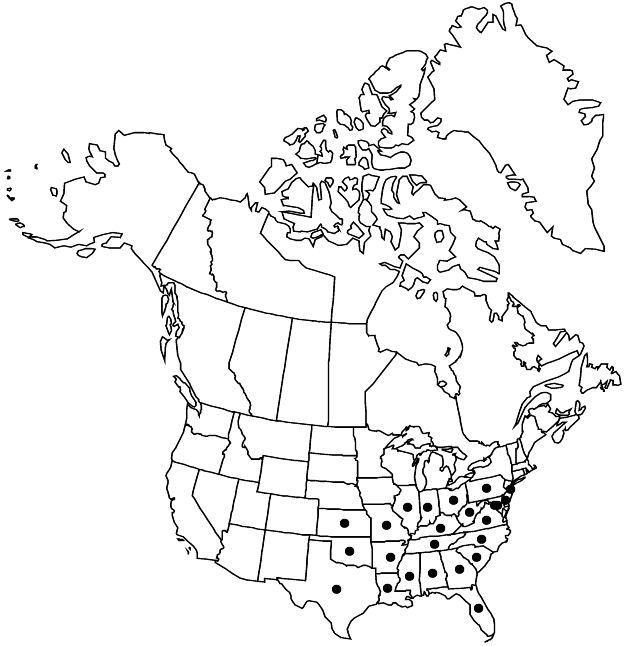Phyllanthus caroliniensis
Fl. Carol., 228. 1788.
Herbs, annual or perennial, without caudex or rhizomes, monoecious, 1–4.5 dm; branching not phyllanthoid. Stems terete, not winged [narrowly winged], glabrous or scabridulous. Leaves distichous; all well developed; stipules auriculate, pale brown or reddish brown; blade elliptic or oblong to obovate, 5–20(–30) × 2–10(–15) mm, base acute, apex obtuse to rounded and apiculate, both surfaces glabrous or scabridulous. Inflorescences cymules, bisexual, with 1–3(–5) pistillate flowers and 1–2 staminate flowers. Pedicels: staminate 0.5–1 mm, pistillate sharply reflexed in fruit, 0.5–1(–1.5) mm. Staminate flowers: sepals (5–)6, pale yellowish green, flat, 0.5–0.7 mm; nectary extrastaminal, 6 glands; stamens 3, filaments distinct. Pistillate flowers: sepals (5–)6(–7), green, often suffused with red, with scarious margins, flat, 0.6–1.4 mm, 1-veined; nectary cupular or annular, lobed or unlobed. Capsules 1.6–2 mm diam., smooth. Seeds uniformly brown, 0.7–1.1 mm, verrucose. 2n = 36 (subsp. guianensis, West Indies).
Distribution

Ala., Ark., D.C., Del., Fla., Ga., Ill., Ind., Kans., Ky., La., Md., Miss., Mo., N.C., N.J., Ohio, Okla., Pa., S.C., Tenn., Tex., Va., W.Va., Mexico, West Indies, Central America, South America, introduced in se Asia.
Discussion
Subspecies 4 (2 in the flora).
Phyllanthus caroliniensis is the most widespread Phyllanthus in the flora area and in the Americas. In addition to the two subspecies in the flora, there are two others. Subspecies guianensis (Klotzsch) G. L. Webster, found in the West Indies, Central America, and northern South America, is similar to subsp. caroliniensis but distinguished by longer stipules (1.5–2 mm versus 0.8–12 mm) and staminate nectary glands that are longer than wide (versus as wide or wider than long). Subspecies stenopterus (Müller Arg.) G. L. Webster, of southern Central America and northern South America, is recognizable by its narrowly winged stems.
Selected References
None.
Lower Taxa
Key
| 1 | Pistillate sepals 0.2–0.3 mm wide; leaf blade vein reticulum clearly visible abaxially; stems glabrous; cymules with 1 staminate and (1–)2–3(–5) pistillate flowers; pistillate nectary cupular, unlobed, enclosing ovary 1/3–1/2 length. | Phyllanthus caroliniensis subsp. caroliniensis |
| 1 | Pistillate sepals (0.2–)0.3–0.5(–0.7) mm wide; leaf blade vein reticulum obscure or invisible abaxially; stems usually sparsely to densely scabridulous; cymules with 1–2 staminate and 1–2 pistillate flowers; pistillate nectary annular, unlobed or 6-lobed, enclosing ovary basally. | Phyllanthus caroliniensis subsp. saxicola |